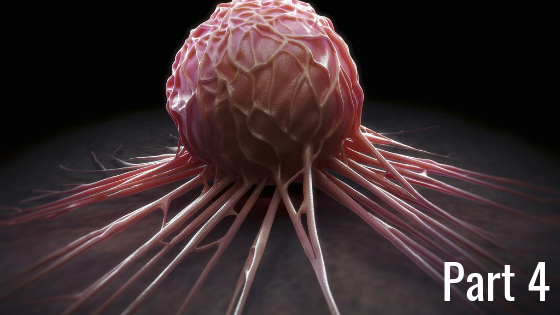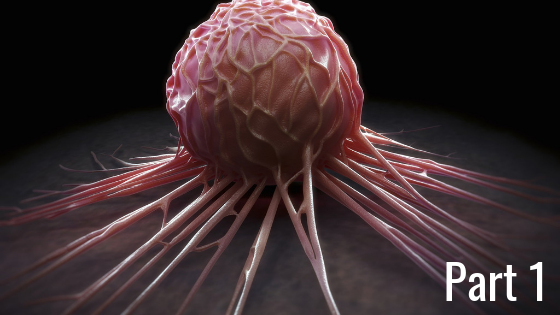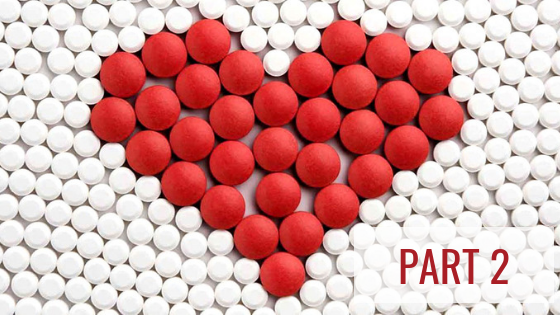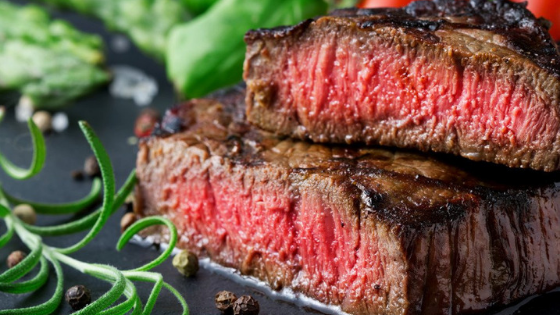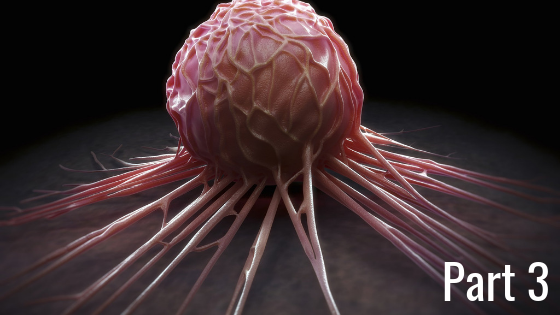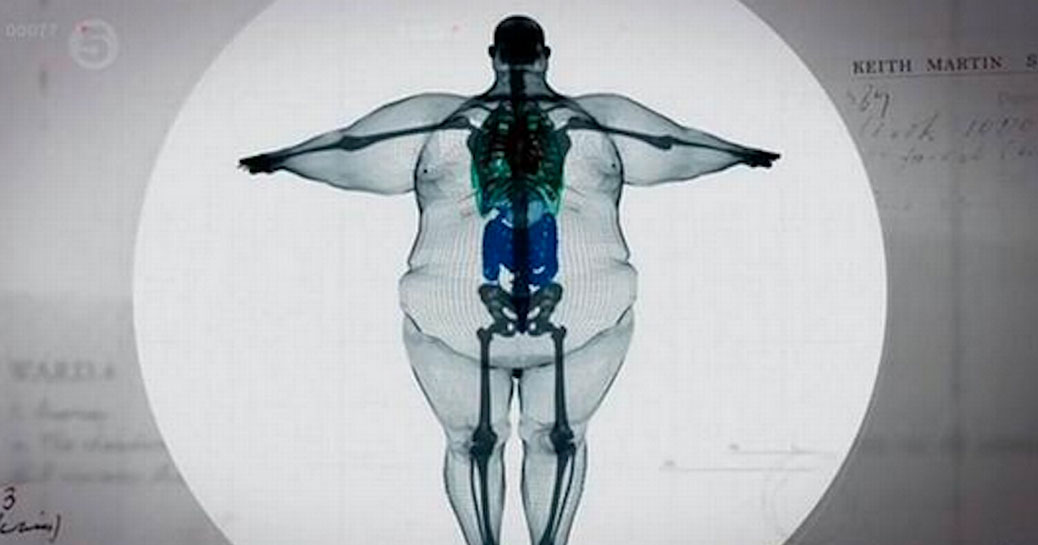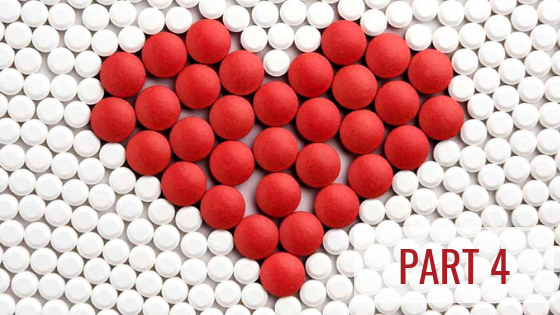In Part 3, we discussed that while a ketogenic diet may help starve cancer, lowering carbs (and therefore the glucose supply) alone, is not enough to stop this beast in its tracks. Insulin is only one of many nutrient sensors. This is where fasting comes in.
Research on the benefits of fasting in humans, in the form of clinical intervention studies, is still early in development. Animal studies, however, have consistently demonstrated that caloric restriction and fasting increases lifespan. The main mechanism for this is a reduction of nutrient-sensing pathways. In other words, eating much less or going for long periods without food could make us live longer. It appears that dietary restriction improves longevity by improving mitochondrial function, increasing autophagy, and reducing inflammation. Autophagy is the process by which your body cleans out debris and recycles damaged cell components.
Nutrient Sensors
The ketogenic diet mimics a fasting state, without the need for caloric restriction. We have seen that cutting out carbohydrates significantly reduces glucose levels, and, therefore, insulin levels. Insulin is sensitive to carbohydrates, or a carb-protein combination.
However, insulin is not the only nutrient sensor. There are others, like mTOR (mechanistic Target of Rapamycin) and AMPK (5′ Adenosine Monophosphate-activated Protein Kinase). These, together with insulin, are the three main nutrient sensors in the human body. A ketogenic diet may have little impact on insulin, but it will still activate mTOR and AMPK.
mTOR
mTOR controls cell growth, repair, and metabolism in response to nutrients, growth factors and cellular energy. It is mostly sensitive to protein. We know that virtually all cancers are associated with mTOR activation and that when mTOR is suppressed, growth is inhibited and maintenance and repair are stimulated. This is clearly favourable in the cancer setting, because we want to prioritise maintenance and repair of cells, over growth.
The fact that amino acids (from protein) are the most potent stimulators of mTOR raises a problem. Just as reducing glucose intake reduces stimulation of insulin, should we be restricting protein intake to reduce mTOR stimulation?
There are no essential sugars. This means that there is no absolute requirement to consume carbohydrates. However, there are 9 ‘essential’ amino acids that cannot be made by the body. This means that they must come from food. Furthermore, there are ‘conditional’ amino acids that are usually not essential, except in times of illness and stress.
mTOR and Protein
Protein is incredibly important. Twenty percent of the human body is made up of protein. A large proportion of our cells, muscles, and tissue is made up of amino acids, which have a multitude of roles, including giving cells their structure. They play a key role in the transport and the storage of nutrients. They are essential for healing wounds and repairing tissue, especially in the muscles, bones, skin, and hair, as well as for the removal of all kinds of waste produced during metabolism.
It is well known that if an individual restricts protein, they develop low bone density (osteoporosis), and low muscle mass (sarcopenia) leading to weakness, and an increased risk of falls and bone fractures.
Current evidence indicates intakes in the range of at least 1.2 to 1.6g/(kg/day) of high-quality (animal-based) protein is a more ideal target for achieving optimal health outcomes in adults. This is in sharp contrast to 0.8 grams/kg/day – which is typical of ‘official’ guidelines for protein intake. 0.8g/kg was determined to be the amount of protein that would keep most people in nitrogen balance, i.e., rebuilding as much tissue as they were breaking down. While this might be OK in healthy people, it is not nearly sufficient if one is trying to build muscle, or if they are recovering from major surgery/trauma, and they need to rebuild skin, bones, and connective tissue.

Animal Based Protein is Remarkably Bioavailable INSULEAN
In addition, very few of these nitrogen-balance studies were performed in older individuals, further supporting the notion that 0.8g/kg/day is a wholly inappropriate figure for establishing recommendations. The totality of the available evidence suggests that despite persistent beliefs to the contrary, there is no evidence-based link between higher protein diets and kidney disease or adverse bone health. In fact, insufficient dietary protein intakes may be a more severe problem than protein excess in the elderly.”
There is no evidence-based link between higher protein diets and kidney disease or adverse bone health.
It is reasonable to assume that we need to keep amino acids, and growth factors like IGF-1 (which are stimulated by protein) low, so as to suppress mTOR. However, mTOR and IGF-1 are not necessarily ‘bad’. Neither is insulin. We need these important hormones for thousands of normal biological processes. However, like insulin, we do not need to have persistently raised levels of these nutrient signalling molecules. What we need to do is keep them pulsatile. We do this not by keeping dietary protein intake as low as possible, but by including regular time-restricted eating (intermittent fasting) and block fasting (fasting for a day or more) into our dietary patterns.
AMPK
AMPK is activated in response to a shortage of energy (ATP) from carbohydrates, protein, and fat. When ATP is low, AMPK goes up. AMPK stimulates the creation of new mitochondria and regulates their metabolic function. AMPK signalling is interesting because it is a known target for treating the metabolic syndrome and type-2 diabetes. Metformin, a widely used anti-diabetic drug stimulates AMPK.
Recently AMPK is emerging as a target for cancer prevention and treatment. AMPK activity opposes tumour development and progression in part by regulating inflammation and metabolism. This explains the recent resurgence of interest in Metformin as a potential anti-cancer therapy.
Starving Cancer – Fasting
Ketogenic diets lower insulin, but will still activate mTOR and AMPK. In animal studies, fasting lowers insulin, IGF-1, and MTOR, while increasing AMPK. These are the most important nutrient sensors in humans, but there are many more nutrient sensors, and likely more yet to be discovered. We can wait until all these discoveries and human studies are complete, or we could start advising people to fast regularly.
Fasting is an ideal intervention to influence nutrient-sensing pathways, which, as we have discussed, can optimise mitochondrial health. Fasting is far from a new idea. Cultures all over the world have adopted fasting for reasons relating to ‘purification’ of the body and mind. This has been an established practice for thousands of years. We also know that our early ancestors must have cycled between periods of fasting – during food scarcity, and periods of feasting. The human body is exquisitely well adapted to storing energy in form of glycogen (glucose chains) and fat. These adaptations enabled us to survive and thrive irrespective of the prevailing environment.
“The best of all medicines is resting and fasting” Benjamin Franklin
Fasting (not eating) can target and eliminate cancer cells through multiple mechanisms. This dietary intervention is anti-angiogenic (prevents growth of new blood vessels), anti-inflammatory, and pro-apoptotic (encourages cell death). Fasting also stimulates mitophagy, the process of destroying old, dysfunctional mitochondria. In addition, by increasing AMPK, and suppressing mTOR, fasting stimulates the growth of new mitochondria, keeping them in a ‘youthful’ state.
Jason Fung, MD, is the preeminent authority on fasting. His book, ‘The Complete Guide to Fasting’’, is packed with useful information and practical tips to help you incorporate regular fasting into your lifestyle. It is well worth a read.
Fasting and very low carbohydrate (ketogenic) diets’ superpower is to keep nutrient signalling pathways pulsatile, i.e., discontinuous. This simple, cheap, accessible and achievable intervention could well be the silver bullet in keeping mitochondria healthy, and by extension, reducing the growth of cancer and increasing our longevity.
Starving Cancer – Drugs and More
Professor Thomas Seyfried and his team have come up with a therapeutic strategy designed to reduce the availability of glucose and glutamine, thus starving cancer cells of their most important fuels, and increasing their vulnerability to oxidative stress and apoptotic death. The strategy includes dietary interventions (ketogenic diets), pharmaceutical agents, such as DON (6-diazo-5-oxo-L-norleucine) and other glutamine inhibitors, and hyperbaric oxygen. Hyperbaric oxygen, in combination with nutritional ketosis, kills tumour cells through apoptotic and anti-angiogenic mechanisms while also reducing inflammation. Pre-clinical trials (animal studies), demonstrate that these interventions usually work best in combination. This exciting development in cancer therapeutics has the potential to effectively manage most cancers, provided everything is done to ensure tolerability.
Glutamine is a key metabolite needed for the immune system and other important functions. Care must be exercised to ensure minimal toxicity – which is to be expected when one interferes with an important molecule, as we have learned from the devastation related to the widespread use of cholesterol-lowering drugs (Statins).
Conclusion
Allopathic (conventional) medicine can no longer profess that cancer is a genetic disease of random mutations. I have discussed the fact that the Somatic Mutation Theory is not only a fairly myopic methodology in understanding cancer, it is also clearly incomplete and problematic. We now have accumulating evidence that cancer is, in fact, a metabolic disease. We are manipulating the processes that ‘feed’ cancer, based on the simple understanding that cancer cells, like every other living thing, need to feed to grow. This discovery is a game changer because the way we manage metabolic diseases is by acknowledging and ‘rectifying’ the cellular food environment. Suddenly, avoiding and managing cancer seems a lot less complicated.
Here is my take on things you can do to Avoid Cancer.
- Don’t smoke cigarettes.
- Don’t eat a diet high in sugars, refined carbohydrates or industrial vegetable oils.
- Eat a real food diet, composed of high-quality protein, natural fat (avocado, coconut oil, butter, olive oil, fatty meat) and a wide variety of colourful vegetables.
- Lose weight using dietary interventions such as low carbohydrate diets and therapeutic fasting.
- Incorporate fasting into your lifestyle. Start with daily intermittent fasting, and proceed with block fasting. This is a safe practice for most people. Those on medication should ideally be supervised by a medical practitioner.
- Try to avoid and promptly treat the infections listed earlier. Get vaccinated if necessary, or if you are at high risk of contracting viruses, such as Hepatitis B. Practice safe sex by using condoms.
- Avoid exposure to asbestos, dangerous dust or fumes, and excessive air pollution. This includes avoiding agrichemicals known to be carcinogenic.
- Do not have unnecessary X-rays, CTs or other scans that use radiation.
- Get plenty of safe sunlight, to optimise your vitamin D levels.
- Engage in regular physical exercise; one of the most healthful interventions known to man – second only to fasting.
- Don’t drink alcohol to excess.
Cancer kills indiscriminately, with no regard to race, gender, social status, wealth or geography. This piece sought to illuminate a new paradigm in understanding this disease. The genetic paradigm has failed to stem this epidemic. When we sit back and observe this disease through a ‘first principles’ lens, we can clearly see that it is, in fact, our environment that contributes overwhelmingly to the risk of developing this disease. This holds true for all chronic metabolic diseases, and there are no exceptions.
The only regret I have is not having this information when my own mother was afflicted with this beast. Perhaps it’s not too late for you and those you love.

